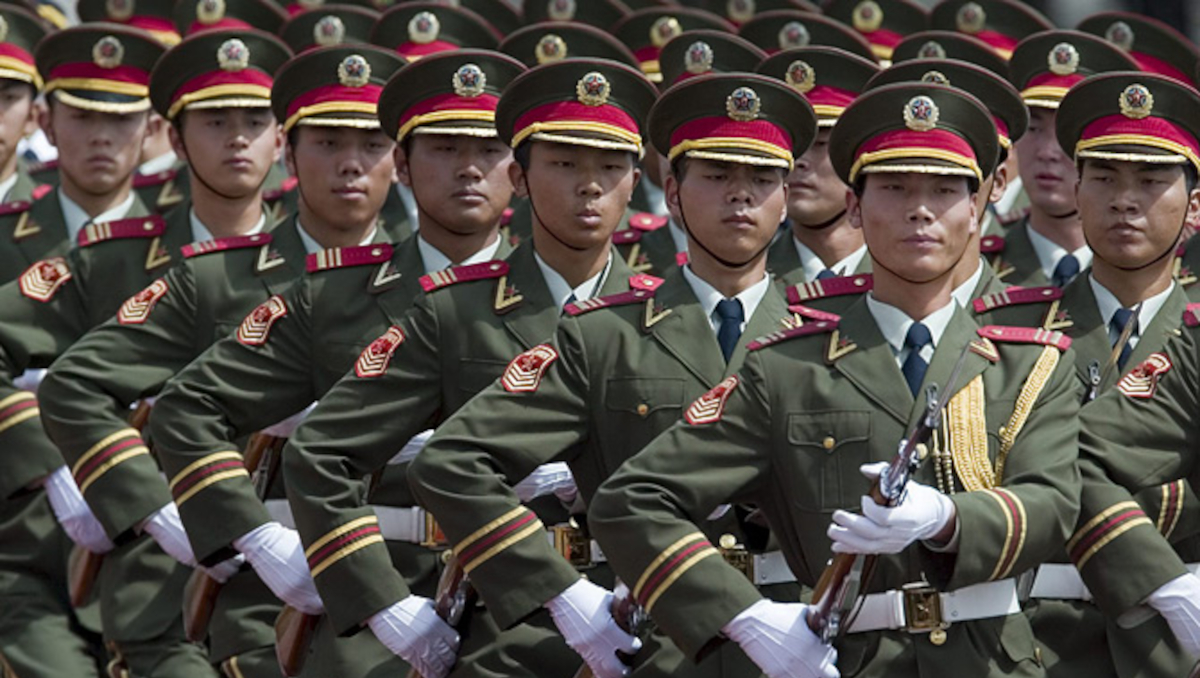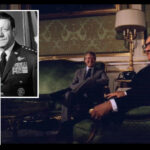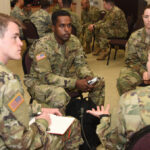
The USAWC has an established history of implementing various pedagogical approaches across its core curriculum and elective courses.
In 2023, the U.S. Joint Staff directed the war colleges to increase the portion of their curricula devoted to understanding China, to include its “national interests, strategic objectives, and domestic constraints, and grand strategy.” The purpose of this deeper understanding of the Department of Defense’s pacing challenge is to enable students “to develop policies, strategies, forces, and military plans that counter PRC aggression against the United States, its allies, partners, and interests.” The implications of this guidance were clear, the U.S. Army War College (USAWC) had to not just raise general awareness but provide practical—preferably experiential—knowledge that will allow graduates to act in the real world.
The School of Strategic Landpower chose to implement this in phases, beginning with the resident course in the 2023-2024 academic year. The main vehicle for this was a new 10-lesson China Integrated Course (CIC). This year we tested an alternative experiential learning option. Next year, the distance education course will deliver its version of the course. All of these are just the most recent examples of how the USAWC centers warfighting with innovative pedagogies and leveraging academic and practitioner expertise.
Innovative Pedagogies
The USAWC has an established history of implementing various pedagogical approaches across its core curriculum and elective courses. As an integrated course, the CIC leverages several of these approaches to ensure that students are not only building foundational knowledge about China, but are also able to apply what they have learned. Half of the lessons in the course begin with a plenary lecture delivered by a subject matter expert, followed by a question-and-answer session. The class then breaks into their seminars of typically sixteen students for in-depth discussions, in which students can delve deeper into the readings and plenary presentation, test their assumptions, and apply what they have learned to a relevant strategic issue.
For example, in one lesson the students learn about China’s fragmented policy making and implementation process and its effects on the Belt and Road Initiative (BRI). Having learned these aspects of China’s foreign policy through the readings and plenary lecture, students then explore in seminar discussions how strategic leaders can develop and implement strategies of engagement, cooption, or competition vis-a-vis the BRI and the implications of any of those courses of actions. This encourages students to critically assess real-world policy challenges and apply theoretical frameworks to dynamic geopolitical contexts, deepening their strategic thinking skills.
The other lesson type uses experiential learning pedagogies, including class exercises and wargames. Having learned, and engaged in discussions about the history of China and the Chinese Communist Party, its political and strategic culture, and the force structure and modernization process of the People’s Liberation Army (PLA), the students conduct the Pacific Posture 2032 wargame. In this exercise, the seminar splits into two teams: Blue (the United States) and Red (China), that compete using the military, diplomatic, informational, and economic instruments of national power. The objective is to influence other countries in the region, gain strategic access, deny access to opponents, and secure geopolitical advantage. The game unfolds over four turns, each representing two years. During each turn, teams invest resources in select countries to “set the theater,” guided by their strategic objectives and future force posture needs. Students must also allocate defense management resources to modernization, readiness, and force structure. Faculty adjudicate outcomes, determining which team gains technological and geographic advantages as the situation progresses toward armed conflict between China and the United States and its allies. With strategic conditions set, the course then shifts to how China conceptualizes and conducts warfighting.
Following a lesson on Chinese Warfighting that introduces students to PLA strategic and doctrinal concepts, the students apply their understanding to a three-day wargame called Pacific Overmatch. In this exercise, the same two teams that competed in Pacific Posture develop a campaign approach that advances and achieves US or Chinese national security interests and objectives within the construct of the scenario. They are tasked to apply relevant aspects of operational art, operational design, and the joint planning process to understand American and Chinese strategic and operational environments, frame military objectives, and communicate the sequence of actions and activities required to execute an armed conflict campaign. They apply American or Chinese warfighting concepts across all domains in the development, communication, and execution of an armed conflict campaign in the Western Pacific.
The game simulates U.S.–China competition, crisis, and conflict, prompting students to apply foundational knowledge from the core curriculum and the initial lessons if the CIC.
This year’s pilot offered lessons that will help improve subsequent iterations of the CIC and the broader curriculum as well. Five seminars tested Pacific Strategy, a matrix game developed by the USAWC wargaming experts in the Center for Strategic Leadership. The game simulates U.S.–China competition, crisis, and conflict, prompting students to apply foundational knowledge from the core curriculum and the initial lessons if the CIC. This fosters their ability to use a wider range of national power instruments across all three phases of the competition continuum. Pacific Strategy will be revised next year, incorporating student and faculty feedback and academic expertise ahead of its broader implementation across the remaining CIC seminars.
Academic and Practitioner Expertise
Developing and implementing the CIC requires a broad pool of expertise. The course is purposefully designed to draw on the talents of the civilian and military academics and practitioners from all three resident-course departments: the Department of Command Leadership and Management (DCLM), which educates senior leaders in leading organizational change and managing the enterprise aspects of national defense; the Department of National Security and Strategy (DNSS), which prepares leaders to understand and navigate strategic competition, conflict, national policy, and global dynamics; and the Department of Military Strategy Planning and Operations (DMSPO), which focuses on planning and executing military operations and leading joint forces. The CIC also leverages the expertise of the China Landpower Studies Center in the Strategic Studies Institute (SSI) for plenary lectures.
Lessons in Warfighting
The CIC is designed to produce strategic leaders who know how to deter China, and, if deterrence fails, lead military operations. At its core, the course emphasizes the development and application of warfighting skills grounded in strategic thought and operational planning. Students learn how to generate landpower options within a joint and combined context, apply strategic thinking to assess evolving threats, and design coherent approaches across the competition continuum. The CIC also trains students to integrate military and non-military instruments of national power to pursue US interests and respond decisively to national security challenges. Critically, the course prepares students to anticipate and shape future operational environments by identifying emerging military requirements and force design implications. It also reinforces the principles of strategic leadership necessary to build, lead, and sustain combat-ready units capable of fighting and winning in a high-end conflict.
Conclusion
The CIC equips USAWC graduates with the strategic insight, operational acumen, and warfighting proficiency needed to address the pacing challenge posed by the PRC. By combining foundational knowledge, experiential learning, and interdisciplinary expertise, the course ensures students can think critically, lead strategically, and operate effectively in competition, crisis, and conflict. As the global security environment evolves, the Army War College will continue to refine the CIC guided by Joint Staff directives, Army priorities, and student feedback to ensure its graduates are ready to deter aggression, defend US interests, and, if necessary, fight and win in a contested theater.
Zenel Garcia is an Associate Professor of National Security Studies in the Department of National Security and Strategy and co-director of the Resident Course China Integrated Course at the U.S. Army War College. His research focuses on the intersection of international relations theory, security, and geopolitics. Specifically, how interpretations of security and the geopolitical environment shape the discursive and empirical processes of regional formation and transformation in the Indo-Pacific and Eurasia.
John Nagl is Professor of Warfighting Studies and co-director of the Resident Course China Integrated Course at the U.S. Army War College. He is the author of Learning to Eat Soup with a Knife: Counterinsurgency Lessons from Malaya and Vietnam.
The views expressed in this presentation are those of the speakers and do not necessarily reflect those of the U.S. Army War College, U.S. Army, or Department of Defense.
Photo Credit: Digi-Shot via flickr Creative Commons 2.0





In teaching about and studying China (etc.) currently, this would seem to need to be done, today, by first acknowledging that, in certain respects, the U.S. today is more like our opponents/our competitors/our enemies — to include China — than, possibly, any other time in our history. At to that such suggestion, consider the following “civilizationism” perspective:
“The idea that humanity is divided into distinct civilizations and that relations among these macro-entities are the central drivers of global politics has acquired tremendous hold in our times. A multiplicity of intellectual and cultural elites around the world—most significantly in the United States, Europe, the Middle East, Russia, and China—have represented the post–Cold War world as being either in the thralls of a global clash among civilizations (Huntington 1996; Lukin 2014) or in a desperate need for greater dialogue and understanding among these (Camilleri and Martin 2014; Dallmayr, Kayapinar, and Yaylaci 2014; DoC Research Institute 2019).
Civilizational imaginaries are being embraced by major political actors too, whether state or non-state based, around the world. These imaginaries are often closely interlaced with anxieties of civilizational crisis and decline, perceived to be caused by powerful cultural, economic, and political forces within and beyond one’s own civilization. Right-wing populists in the United States and across Europe—from Donald Trump to Geert Wilders and Viktor Orbán—have all called for a vigorous defense of what they refer to as the Judeo-Christian West. Very different Islamist actors—from Mohammad Khatami of Iran, to Recep Tayyip Erdoğan of Turkey, and jihadist groups such as the Islamic State of Iraq and Syria (ISIS)—have consistently articulated a civilizational understanding of the Muslim world. Civilizational themes have come to the forefront of Xi Jinping’s rhetoric about China as a state civilization. Vladimir Putin, and much of the Valdai Club intelligentsia around him, subscribes to a view of world politics defined by inter-civilizational relations with Russia as the epicenter of a broad Pan-Slavic, Christian Orthodox, or Eurasian civilization.”
Beyond discourse, these imaginaries appear to legitimize and underpin a range of international practices and institutions. Trump’s “Muslim ban” seemed driven by a logic of civilizational clash. The Russian-led Eurasian Economic Union (EAEU) is shaped by Eurasianist ideas and its war in Ukraine by the civilizational imaginary of the “Russian World.” Civilizational themes infuse China’s Belt and Road Initiative (BRI), most visibly in the context of the 2019 Conference on Dialogue of Asian Civilizations. Turkey has been a leading force in the institutionalization of the UN Alliance of Civilizations since 2005.”
(See the first three paragraphs of the article “Civilizationism and the Ideological Contestation of the Liberal International Order” by Gregorio Bettiza, Derek Bolton, David Lewis in International Studies Review, Volume 25, Issue 2, June 2023.)
Question:
As to the matters that I present above, must these — now and for obvious reasons — become incorporated into our studying and teaching about China today? And, likewise, become incorporated into our exercises and wargames (etc.) re: China?
Another way of looking at how the U.S., today in certain respects, is more like our opponents/our competitors/our enemies — to include China — than, possibly, (I probably should have said in the last 100 or so years?) of our history, this is via the President Trump (first term and continuing now?) approach to international relations, noted below:
“We are also realistic and understand that the American way of life cannot be imposed upon others, nor is it the inevitable culmination of progress.” (See Page 4 of the Trump NSS — midway down the second column.)
“We do not expect diverse countries to share the same cultures, traditions, or even systems of government. But we do expect all nations to uphold these two core sovereign duties: to respect the interests of their own people and the rights of every other sovereign nation. This is the beautiful vision of this institution, and this is foundation for cooperation and success.” (See about the 15th paragraph of the White House transcript of the Trump 2017 speech to the United Nations General Assembly.)
“Strong, sovereign nations let diverse countries with different values, different cultures, and different dreams not just coexist, but work side by side on the basis of mutual respect.” (See about the 16th paragraph of the White House transcript of the Trump 2017 speech to the United Nations General Assembly.)
Question:
In the various classes and instruction given regarding China (etc.) today — and in our exercises and wargames regarding same — are these “we are so much more like you now”/”we think so much more like you do now” matters (and their effects and potential effects) — are these not vigorously discussed, debated, and incorporated therein?
This article instills confidence that future warfighters and military leadership will be prepared to confront the complex and entrenched threat posed by a China capable of challenging U.S. military dominance across economic, technological, and strategic domains.